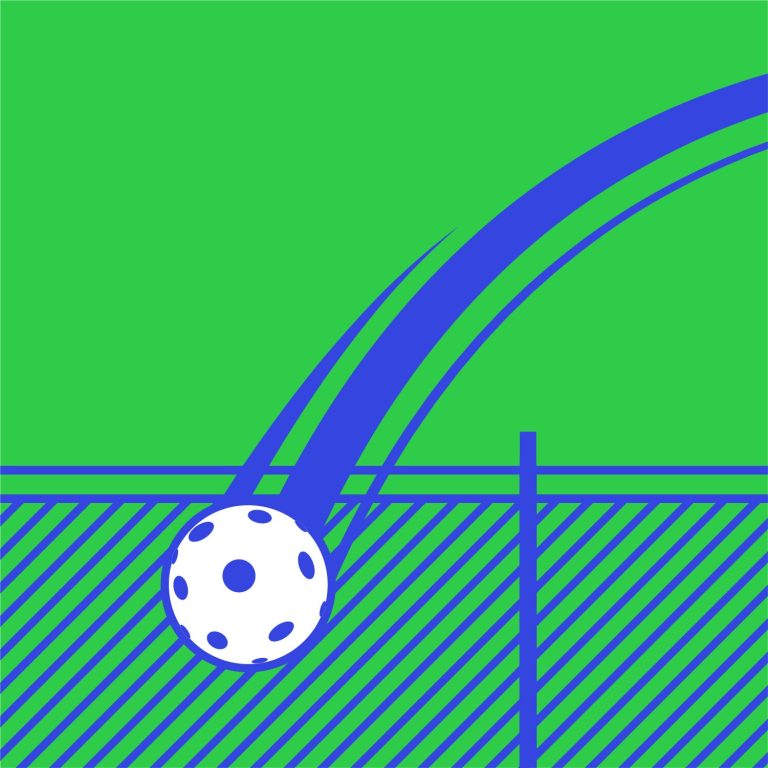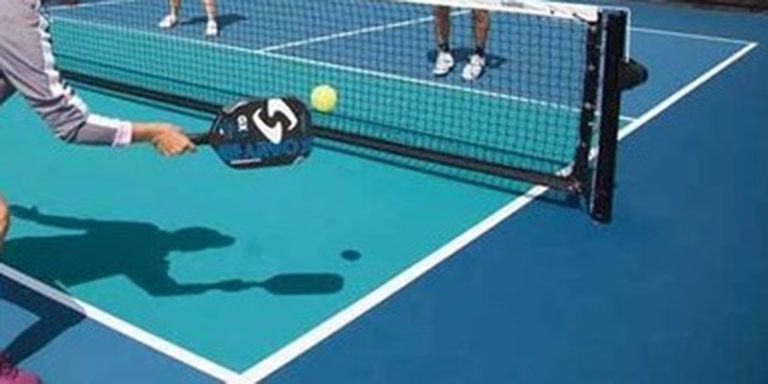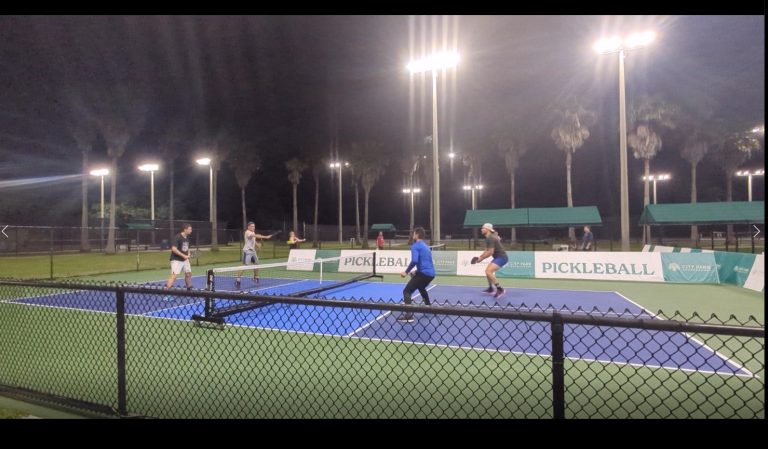Mastering Shots in Pickleball
Mastering Grip Pressure and Paddle Angles in Pickleball
Yesterday, while drilling with my son AJ, he pointed out that I was holding the paddle too tight when dinking at the kitchen. This observation led me to delve deeper into the nuances of grip pressures and paddle angles for other shots in pickleball. Here’s what I discovered:
Understanding The Shots in Pickleball
Before diving into the specifics of grip and angle, it’s essential to understand the various shots in pickleball:
- Serve: Initiates the point with an underhand shot targeting the opposite service box diagonally.
- Return of Serve: Follows the serve with the aim of placing the ball deep into the opponent’s court.
- Dink: A soft shot just over the net, typically landing in the non-volley zone.
- Drive: A hard, flat shot that travels low over the net and deep into the opponent’s court.
- Lob: A high-arcing shot that goes over the opponent’s head, aiming to land near the baseline.
- Smash/Overhead: A powerful downward shot, usually hit when the ball is above the player’s head.
- Drop Shot: A soft shot designed to land just over the net in the non-volley zone.
- Volley: A shot hit out of the air, without letting the ball bounce first.
- Half-Volley: A shot hit immediately after the ball bounces, typically right off the ground.
- Third Shot Drop: A soft shot hit from the baseline after the return of serve, aiming to land in the non-volley zone.
- Punch Volley: A firm volley hit with a controlled, punching motion.
- Backspin/Slice: A shot hit with a downward motion, imparting backspin on the ball.
- Topspin: A shot hit with an upward motion, imparting topspin on the ball.
- Bump: A defensive strategy to reset the point, usually played softly to allow time for recovery.
The Role of Grip Pressure of Shots in Pickleball
Grip pressure plays a pivotal role in controlling and executing shots in pickleball. Here’s a breakdown of the recommended grip pressures for each shot:
- Serve: 30% grip pressure for a smooth and consistent serve.
- Return of Serve: 50% grip pressure ensures depth and control on the return.
- Dink: 20% grip pressure for better touch and finesse.
- Drive: 70% grip pressure provides the necessary power for this aggressive shot.
- Lob: 40% grip pressure for achieving the desired arc and depth.
- Smash/Overhead: 80% grip pressure for power.
- Drop Shot: 25% grip pressure for touch and control.
- Volley: 60% grip pressure ensures quick reactions and power.
- Half-Volley: 50% grip pressure for controlling this challenging shot.
- Third Shot Drop: 30% grip pressure for softness and control.
- Punch Volley: 70% grip pressure for power and control.
- Backspin/Slice: 40% grip pressure for imparting the desired spin.
- Topspin: 50% grip pressure for the right amount of spin and control.
- Bump: 35% grip pressure for resetting the point and controlling the ball’s pace.
Decoding Paddle Angles
The angle of the paddle face significantly influences the trajectory and behavior of the ball. Here’s a guideline for each shot:
- Serve: 10-15 degrees open from vertical for optimal net clearance and depth.
- Return of Serve: 5-10 degrees open from vertical for returning the ball deep and with control.
- Dink: 20-25 degrees open from vertical to lift the ball just over the net.
- Drive: Neutral (0 degrees from vertical) for a flat trajectory.
- Lob: 30-35 degrees open from vertical for the desired high arc.
- Smash/Overhead: 5-10 degrees closed from vertical for a downward trajectory.
- Drop Shot: 20-25 degrees open from vertical to drop the ball softly over the net.
- Volley: 5 degrees open to neutral for punch volleys.
- Half-Volley: 10-15 degrees open from vertical for control.
- Third Shot Drop: 20-25 degrees open from vertical for a soft arc over the net.
- Punch Volley: Neutral for a direct and powerful shot.
- Backspin/Slice: 5-10 degrees closed from vertical for the desired spin.
- Topspin: 10-15 degrees open from vertical for generating topspin.
- Bump: 10-15 degrees open from vertical for net clearance and depth.
Reference for Paddle Face Angles
The paddle face’s deviation from a vertical position is categorized as:
- Open Angle: The paddle’s top tilts back, aiding in lifting the ball.
- Closed Angle: The paddle’s top tilts forward, driving the ball downward.
- Neutral: The paddle face is perpendicular to the ground.
Diving Deeper into Each Shot
Understanding when and how to use each shot, along with its mechanics, can elevate your pickleball game. Here’s a closer look:
- Serve: Initiate the point by standing behind the baseline and using a low-to-high swing motion. Aim for depth and mix up serves for unpredictability.
- Return of Serve: Stand ready and anticipate the serve’s direction. Use a compact swing to return the ball deep into the opponent’s court.
- Dink: Use a soft touch to send the ball just over the net, aiming for the non-volley zone. This shot is all about finesse and control.
- Drive: Use a full swing to hit the ball hard and flat. Aim for the opponent’s feet or body to force a weak return.
- Lob: Use a low-to-high swing motion to send the ball high over the opponent’s head. Aim for the baseline to push them back.
- Smash/Overhead: When the ball is above your head, use a powerful downward motion to smash it into the opponent’s court.
- Drop Shot: Use a soft touch to drop the ball just over the net, making it difficult for the opponent to attack.
- Volley: Stand ready at the net and react quickly to hit the ball out of the air. Use a compact swing for control.
- Half-Volley: This is a challenging shot that requires quick reflexes. Bend your knees and get low to hit the ball right after it bounces.
- Third Shot Drop: After the return of serve, use a soft touch to send the ball just over the net, aiming for the non-volley zone.
- Punch Volley: Use a firm and controlled motion to hit the ball directly back, aiming for the opponent’s feet or body.
- Backspin/Slice: Use a downward motion to impart backspin on the ball, making it difficult for the opponent to handle.
- Topspin: Use an upward motion to generate topspin, making the ball dip quickly after crossing the net.
- Bump: Use this defensive shot when out of position. Aim for high net clearance and deep placement to buy time for recovery.
While these guidelines offer a solid foundation, mastering these shots in pickleball requires consistent practice, gameplay, and strategic understanding. Adjust your techniques based on your playing style, opponents, and specific game situations.







